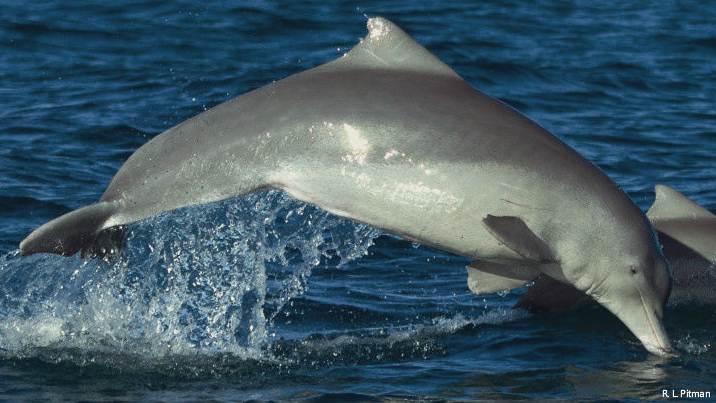Filtered By: Scitech
SciTech
New dolphin species named

Australian humpback dolphin (Sousa sahulensis). Photo: R. L. Pitman
After 17 long years, this group of marine mammals has finally been officially recognized as a distinct species.
Introducing Sousa sahulensis, the Australian humpback dolphin, the fourth recognized humpback dolphin species, according to the Wildlife Conservation Society.
“The formal recognition and naming of a new species brings with it a need to formulate or update plans for protection of these dolphins,” said Dr. Howard Rosenbaum, director of the Wildlife Conservation Society's Ocean Giants Program.
Sousa sahulensis joins three other closely related species:
- Atlantic humpback dolphin (Sousa teuszii)
- Indo-Pacific humpback dolphin (Sousa chinensis)
- Indian Ocean humpback dolphin (Sousa plumbea)
The name "Sousa sahulensis" is derived from the Sahul Shelf, an underwater shelf between northern Australia and southern New Guinea.
But Rosenbaum noted humpback dolphins are threatened with fisheries interactions, vessel impacts, and development in their coastal habitats.
He said efforts to protect humpback dolphins and other coastal dolphins, and their most important habitats "are essential for the survival of these species.”
"There is currently no population estimate for the Australian humpback dolphin, but the authors warn that it is unlikely that more than a few thousand dolphins of that species exist, based on available sighting data," WCS said.
It said potential threats to humpback dolphins include coastal development, accidental capture by fishermen, vessel collisions, and sometimes direct hunting.
Definitive classification
Until researchers from WCS and other institutions provided definitive results in late 2013, the process of describing a new species required a systematic analysis of species closely related to the animal.
In the case of the humpback dolphins, they have puzzled researchers and taxonomists for decades.
Scientists have disagreed about the number of species, with some considering humpback dolphins the same species and others claiming as many as nine.
17 years
It took 17 years for the species to be formally recognized, with the time spent in examining available historical records, physical descriptions, and genetic data of humpback dolphins.
The humpback dolphins comprise a widespread group of coastal cetaceans from the coast of West Africa to the northern coast of Australia, WCS said.
Aside from Rosenbaum, Thomas Jefferson of Clymene Enterprises co-authored the study.
Jefferson said they finally managed to settle many questions about humpback dolphins, "particularly how many species actually exist," using data collected over two centuries.
The new study included detailed reviews and descriptions of the four humpback dolphin species. They used external and skeletal measurements, coloration, molecular genetics, and geographic distribution.
WCS said the study builds on recent studies that first detected the existence of a unique humpback dolphin species in the waters of northern Australia and New Guinea, using genetics and morphological characters.
Distinctive characteristics
The newest species' dorsal fin is lower and more wide-based than those of Sousa teuszii and S. plumbea.
Also, the color is dark gray, compared to the distinctly white coloration of Sousa chinensis.
On the other hand, the Australian humpback dolphin also has a distinctive dark dorsal “cape.”
Wallace line
Meanwhile, WCS noted the distribution of the newest species appeared to support the zoogeographical barrier described by Alfred Russell Wallace, the Wallace Line.
The west of the line includes terrestrial animal species mostly of Asian origin, while to the east are animal species largely descended from Australasian ancestors.
For marine species, this divides Indo-Pacific and Australian humpback dolphins, it said. — Joel Locsin/TJD, GMA News
More Videos
Most Popular




